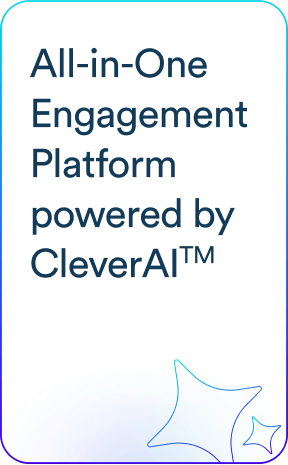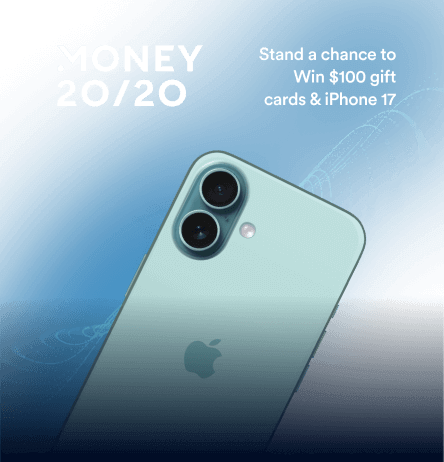Martech (marketing technology) is defined broadly as software used by marketing teams to plan, execute, and measure marketing campaigns. Martech solutions focus on the collection and analysis of user data, segmentation, content and customer experience, and provide various means of reaching and engaging with your customer across multiple channels.
The Role of User Behavior Data in Establishing Meaningful Digital Relationships
For every interaction to be timely and relevant to the user’s context, behavioral data plays a critical role. The more data you have on your users and their behaviors, the more relevant your user engagement campaigns become.
- Does Bob predominantly watch comedy movies? Recommend the latest standup comic shows that he hasn’t seen yet.
- Does Mary order Thai food for dinner every other Friday? Send her a push notification every second Friday at 5:00 pm reminding her to order something spicy.
- Does Jane often miss the payment due date of her utility bill? Send her a text message a day before a bill is due.
- John launches your app three times a week, but still hasn’t registered? The next time John opens the app, show an in-app notification explaining the perks of being a registered user.
- Maria, who has created 25 playlists on your music app, has never shared one with her more than 500 friends? Send a push notification inviting her to share playlists on social media.
Having actionable user behavior data makes it easier for marketers to plan out the type of campaigns that turn new users into loyal superfans.
More importantly, it brings your campaigns away from generic spam territory (one size fits all!) into an area where your brand can build a meaningful digital relationship that’s win-win for both your company (increased CLTV!) and your customer (experiences tailored for me!).
Our Chief Strategy Officer, Momchil Kyurkchiev, has the perfect story that encapsulates how we want personalized marketing to play out for all our customers. Listen to his childhood experience of hyper-personalization in his mother’s dress shop:
Data Dimensions to Consider
To be effective in your user engagement and retention strategies, there are two dimensions to consider while recording and using this kind of first party user behavior data:
- Data granularity — the size and precision of the data you’re looking at— and
- Data lookback period— how far back you can access the data you need.

Simply put, the more granular data you store and can access for your campaigns, the more relevant and effective your marketing campaigns will be. Also, the greater your data lookback period (e.g., being able to access five years’ worth of user behavior data for my users versus only three months), the more relevant and effective your marketing campaigns will be.
If I know that Noah purchases the latest basketball and soccer games released that year on my app and that he’s done this for the past two years on Black Friday, then I know how I can create an excellent experience for Noah for this upcoming Black Friday promotion.
The Evolution of Martech
The advent of martech can be traced back to the 1980s with the concept of database marketing over direct (snail) mail catalogs. As the internet, email, and mobile became more popular during the 80s and 90s, more and more channels were made available for reaching out to customers. The image shows the evolution of martech over the past four decades covering channels, user volume, and technologies used.
Three Severe Data Limitations in Martech Today
It’s abundantly clear looking at the image above that martech has been using pretty generic, multi-purpose technologies for the data layer. Using generic database technologies through the massive growth of users across email, web, and mobile has resulted in three severe limitations today across both data lookback period and data granularity.
90-Day Data Lookback Period
Most tools in martech only allow for 90 days of data lookback. Imagine treating all your users as if they’ve only been with you for the past 90 days. You’re essentially forgetting about everything they bought from you in the past three years. Even worse, you’re treating your most loyal users as if they were new to your app. That‘s a massive disservice to your loyal customers.
250 Data Points Per User Per Month
Most martech tools also have significant limitations in how much granular data you can ingest and store per user per month. Typical limits are around 200 or 250 data points per user per month. Even if these storage limits are increased, access to the granular data points stored is restricted when sending out an email, a push notification, or personalizing some piece of content on the homepage of your mobile app. Once again: you’re limited.
No AI/ML
Even more critical is due to these data limitations there is almost zero use of AI/ML models and algorithms across martech today. AI/ML models allow you to hyper-personalize the customer experience so your customers get offers or notifications that are relevant to their tastes. Except, AI and ML technologies are data hungry and the accuracy of automated content recommendations per user, or even deciding on the best time or channel to send a message to Noah will work much better with increased data granularity and a longer data lookback period.
These underlying limitations are never portrayed as technology limitations but get exposed as costs and/or overage charges every month for marketing teams. The bottom line is that due to lack of access to real-time granular data for campaigns and personalization, plus platform costs and overages, growth teams simply cannot unlock the full potential of user behavior data for personalization, user engagement, and retention.
Enter TesseractDB: Making Unlimited User Data Affordable, Available, and Accessible in Real Time
Making granular user behavior data available and affordable is the key to achieving the transition from spam and transactional communication to a world of meaningful digital relationships.
Which is why we built TesseractDB — the world’s first database built specifically for engagement and retention. It was created to overcome the limitations of ordinary martech and to bring the full power of AI/ML to marketers.
What makes it different is the way it’s built.
TesseractDB Architecture

The image shows the high-level architecture of TesseractDB. More technical details about the platform are available here.
Today, TesseractDB powers more than 10,000 mobile apps across three billion devices. It processes more than 36 billion data points every day, serves more than six million queries daily for user insights, and it segments over 50 petabytes of data.
The platform has 11 product/technology patents pending and is based on the invention of Network Columnar Storage (NCF) which is, in turn, based on RCFile (Record Columnar Format). NCF meets the following four key requirements for use within martech:
- Fast data loading, so that all stored granular data is available for personalization and omnichannel messaging as soon as you need it
- Fast query processing, so that all stored data is available in interactive speeds for analysis, insights, and segmentation
- Highly efficient storage space utilization, so that storing unlimited data is cost effective
- Strong adaptivity to dynamic data access patterns, so that data can be used in real time, across multiple users and devices
In addition, TesseractDB also enables running AI/ML models within the database, giving you the power to create and send product recommendations instantly. This means marketers can hyper-personalize campaigns for every user based on their individual behavior data.
Multiple algorithms for automated segmentation (RFM, for example) as well as predictive segmentation are available native to the platform to significantly improve user engagement and retention.
Primary Benefits of TesseractDB
TesseractDB is now in its third generation and offers the following benefits out of the box:
- Up to three years of data lookback period by default, which can be extended as desired
- Up to 2,000 data points stored per user per month by default, which can be extended as desired
- Up to 200 billion messages delivered per month throughput, and extensible
- Ability to run AI models in real time so you can run predictions or send recommendations in real time
- Ability to reduce complexity and total cost of ownership in your marketing stack by using one tightly integrated technology platform that works in real time for user behavior analytics and insights, segmentation, omnichannel messaging, personalization, A/B testing, and AI-powered recommendations
In reality, user engagement and retention is a deep technology and science problem. The problem starts on day one, when a user launches an app for the first time. From there tracking user behavior at every session and every stage enables you to understand them much better, guide them along the ideal lifecycle, increase adoption, upsell features and increase monetization and lifetime value. First party behavior is critical to this and technology that makes unlimited amounts of data available and affordable is the only way to make this effective for digital brands today.
The Proof Is in the Results
One of our customers, ZEE5, the world’s largest streaming platform for South Asian content, used CleverTap to simplify their operations and yet still deliver personalized content to over 190 markets and 18 languages.
Tapping into the power of TesseractDB, they were able to automatically segment their massive audience and send streaming recommendations based on a viewer’s language and viewing preferences.
Furthermore, they simplified their operations so they could launch one global campaign and not have to worry about sending it at the best time for the user on a manual basis.
“With CleverTap coming on board, we don’t have to create multiple campaigns to connect with users across the entire globe. Reaching out to a user based out of Canada or Bangladesh or the UK can now be done through building a single campaign and adding the best send time option” says Jasmeet Bedi, Assistant Manager – User Engagement and Retention at ZEE5.
The overall result? Using the best time feature has given ZEE5 a 60% boost in CTRs when compared to not using the feature. Additionally, their team has seen a 20% increase in its in-app conversion rate. When compared with the control group, their recurring campaigns have seen a lift in CTRs of 8%.
Bring the Tech Back to Your Martech Stack
If you’re ready to go beyond generic spam messaging and into hyper-personalized real-time messaging that builds meaningful relationships, then try it out yourself. Schedule a personalized demo of CleverTap and experience the power of TesseractDB today.

See how today’s top brands use CleverTap to drive long-term growth and retention
Sunil Thomas 
Co-Founder, Chairman & CEO.Expert in technology & building companies.
Free Customer Engagement Guides
Join our newsletter for actionable tips and proven strategies to grow your business and engage your customers.















































